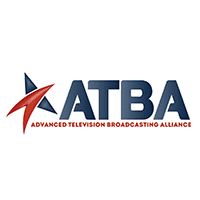At the 2025 NAB Show, the Advanced Television Broadcasting Alliance (ATBA) hosted a highly anticipated and refreshingly honest debate that could help shape the future of Low Power Television (LPTV). Titled “5G Broadcast vs. ATSC 3.0 – Competing Visions or Complementary Tools?” the session featured two of the most influential voices in the space: Vern Fotheringham, a wireless innovator and co-founder of BIDA (Broadcast Internet & Digital Alliance), and Mark Aitken, President of ONE Media and a key architect of ATSC 3.0.
Moderated by Dr. Josh Weiss, ATBA Board Member and LPTV owner, the discussion dove deep into how each technology framework could serve LPTV station owners and operators. What emerged wasn’t a clash of ideologies but a compelling convergence around the potential synergy between ATSC 3.0 and 5G Broadcast.
Key Takeaways:
1. ATSC 3.0: Built for Evolution, Ready for Innovation
Mark Aitken reaffirmed why ATSC 3.0 is widely recognized as “the best broadcast standard in the world.” Designed with a bootstrap layer and a flexible architecture, ATSC 3.0 enables broadcasters to adapt over time—offering not just television delivery, but robust data transmission services. Aitken emphasized the importance of maintaining regulatory stability to preserve broadcaster value and guard against spectrum sell-offs that could destabilize LPTV.
2. 5G Broadcast: An Application, Not a Replacement
Vern Fotheringham clarified that 5G Broadcast isn’t a competitor to ATSC 3.0, but rather an “application layer” that could ride atop the existing standard. Calling it a “killer app” for the low power industry, Vern explained how a hybrid approach can enable LPTV broadcasters to leverage their spectrum for mobile, data-centric, and IoT services. This path allows stations to participate in the rapidly growing 5G ecosystem without abandoning ATSC 3.0.
3. The Hybrid Future: ATSC 3.0 + 5G Broadcast
Perhaps the most exciting outcome of the debate was consensus: both experts endorsed the hybrid model as the best path forward for LPTV. This model enables broadcasters to keep their investment in ATSC 3.0 while layering 5G Broadcast capabilities as demand and device compatibility evolve.
4. The Role of LPTV: Spectrum Opportunity Meets Grassroots Innovation
Throughout the session, both speakers acknowledged the unique position of LPTV in this next phase of broadcast transformation. Low power stations, with their ability to flash-cut and scale distributed transmission systems, hold a distinct advantage in deploying broadcast internet services. Aitken and Fotheringham encouraged collaboration among LPTV licensees to create a national, scalable network ready for monetization and service innovation.
5. Industry Urgency: Don’t Wait to Act
Both speakers issued a word of caution: the window of opportunity is now. With ATSC 1.0 eventually sunsetting and the growing momentum behind broadcast internet, station owners should prepare to make infrastructure investments and build relationships that support long-term growth.
Whether you’re bullish on 5G, loyal to ATSC 3.0, or cautiously evaluating both—this conversation marks a turning point. The broadcast future isn’t an “either/or” proposition. It’s a “yes, and.” And for LPTV operators, that future is brighter—and more technically exciting—than ever before.
🎥 Watch the full video debate Here.
📣 Stay tuned for further updates, partner opportunities, and educational resources from ATBA as we continue advancing television—together.
